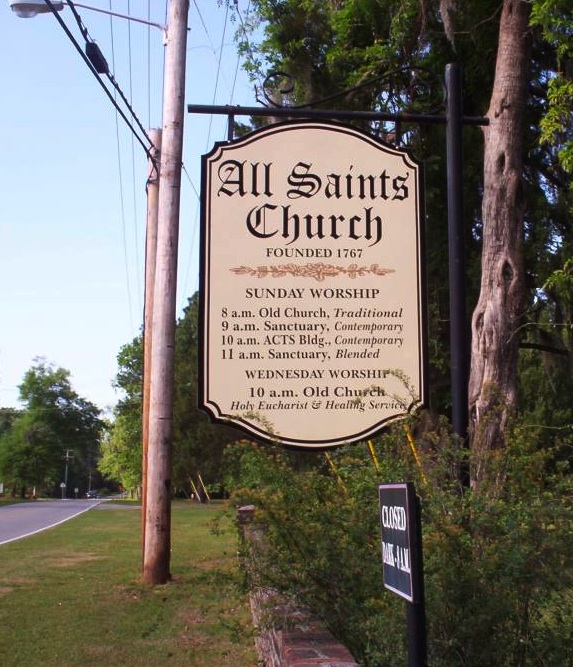Aaaaaarrrrrrrgggggggghhhh!
 Maybe "siiiiigggghhhhh" is a better way to say it. Anyway, it's time for another lesson in the history of Anglican warfare, which means flashing back a few years in that old, familiar timeline -- again.
Maybe "siiiiigggghhhhh" is a better way to say it. Anyway, it's time for another lesson in the history of Anglican warfare, which means flashing back a few years in that old, familiar timeline -- again.
The year is 2000. As noted in earlier posts, that is when (let's turn to coverage in The Living Church):
Two American priests, the Rev. Charles H. Murphy III and the Very Rev. John H. Rodgers, Jr., were consecrated bishops Jan. 29 in St. Andrew's Cathedral, Singapore, by a group of Anglican bishops, including two from the Episcopal Church.
Fr. Murphy, rector of All Saints' Church, Pawleys Island, S.C., and Dean Rodgers, retired dean of Trinity Episcopal School for Ministry, were consecrated as bishops and "will be released to minister in the United States of America," according to a news release. It was not immediately clear who released the bishops. ...
The two new bishops are associated with organizations which have been supportive of the formation of a new Anglican province for traditionalists who have been unhappy with the leftward drift of the Episcopal Church. Bishop Murphy is a leader of First Promise, based in Pawleys Island, and Bishop Rodgers is aligned with Association of Anglican Congregations, an organization of Episcopal and "continuing" congregations which has headquarters in suburban Chicago.
Note the role of that truly historic flock on the coast in South Carolina -- All Saint's Parish Waccamaw (first chapel built in 1736). Note that its rector, in addition to being consecrated as a "missionary bishop" for traditionalists in North America, is already the leader of the early First Promise network, which had similar goals.
Again, the year is 2000. A press release for the global Anglican leaders who performed this irregular rite of consecration proclaimed:
"The archbishops and bishops agree that this is a gospel issue, not a political issue. It is an action to re-establish the unity that has been violated by the unrebuked ridicule and denial of basic Christian teaching. They are convinced it is time to give the faithful in the U.S. a place to remain Anglican.
"The sending of these bishops back to the United States is offered as an interim step in an ongoing effort to lead the Episcopal Church back to its biblical foundations."
Now, let's jump ahead to a very recent Religion News Service report, as published in USA Today, that also focuses on that same congregation, All Saints Parish. You can read about the current All Saints Parish (as in many Anglican real-estate disputes, there now seem to be two flocks) by clicking here.
In this new report, we are told (brace yourselves):
A South Carolina parish that split from the Episcopal Church in 2004 can keep its church property, the state's Supreme Court has ruled, handing a rare legal victory to conservative dissidents.
A majority of members of All Saints Church at Pawley's Island voted to secede from the Episcopal Church five years ago, after an openly gay man was consecrated bishop of New Hampshire. The Episcopal Church maintains that congregations hold their property in trust for the denomination; if they decide to leave, the property stays with the diocese and the national church, Episcopal leaders argue.
Once again, I have no doubt that steps were taken in 2004 that are part of the historical timeline that marks this parish's journey away from the U.S. Episcopal Church and into the embrace of large, traditionalist Anglican flocks in other parts of the world. And, yes, the year 2004 falls after the Nov. 2, 2003, consecration of New Hampshire Bishop V. Gene Robinson, that openly gay, noncelibate bishop.
However, if the story is about All Saints Parish, isn't the crucial date (or at the very least "a" crucial date) actually Jan. 29, 2000, when the parish's own rector is consecrated as a bishop in a rite that is either illegal, irregular or openly confrontational? And while it's clear that national debates about moral theology and sex played a crucial role in the consecrations of Murphy and Rodgers, other issues of biblical authority and church tradition were just as important.
In other words, All Saints Parish is in the thick of things in 2000. There is no way to say that the fight begins in 2004, following the Robinson consecration in 2003. That is way too simplistic. The Robinson event is important, but it is simply inaccurate to state or to imply that it stands alone as the defining moment for this parish. Right?
This is one case where I really wish I could find the RNS story -- in unedited form -- on the wire service's own website. I have tremendous respect for RNS, so I am left wondering: Was this story harshly edited by a USA Today copy editor?